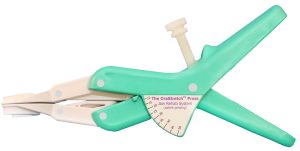 The bones in our body form a skeleton, and that skeleton supports our posture. Whether standing or sitting, correct alignment is important. Good posture preserves long-term bone health and reduces stress on the spine. Equal weight distribution is then achieved so we aren’t walking or sitting at an angle.
The bones in our body form a skeleton, and that skeleton supports our posture. Whether standing or sitting, correct alignment is important. Good posture preserves long-term bone health and reduces stress on the spine. Equal weight distribution is then achieved so we aren’t walking or sitting at an angle.
Poor posture continues to grow as a public health problem: 64.7% of people who work from home have reported neck or back pain. For university students, this rises to 73%.[i] Matching this is the growing market for posture correction, showing a larger awareness of the steps needed to correct neck and back pain.
One cause for concern is the relationship between poor posture and temporomandibular disorder (TMD). Ongoing research seeks to investigate the association to better manage the condition. For now, a firmer understanding of this relationship will better equip dental practitioners and at-risk patients with the ways to lead a better quality of life.

The temporomandibular joint (TMJ) is used constantly, from eating to speaking. It may be a surprise that the jaw can be influenced by the spine, but the muscles and ligaments between them are linked. This closeness has led to speculation that posture problems can increase the risk of TMD.[ii] For instance, the way we eat can have an impact on the spine. In particular, chewing on one side can create an imbalance in the body, shifting the centre of gravity. A change in this then pulls the body weight to one side.
Research on TMD patients has found that they are likely to have an overly forward head position.iii Along with higher reported levels of neck pain, TMD patients may also have worsened jaw pain. Muscle tension is then altered, with a risk of limiting jaw movement.[iii] This can make eating, speech and everyday activities a hardship.
Making issues around posture worse is the growing epidemic of ‘text neck’. Phones, seated jobs and working from home may have made life easier, but the toll on the spine can be significant.i ‘Text neck’ develops from craning the head to look down at a phone for long periods. For every inch forward the head is tilted, the weight on the spine nearly doubles to keep it supported.[iv] TMD patients may therefore find their symptoms aggravated by looking down at their phone or computer.
Posture is affected by many other factors, including age, profession, and pregnancy. Even small daily choices, like the weight of the bag you carry, have an impact.[v] The research around posture as a factor for TMD is still growing and should not be taken as a definitive cause until there is more proof. However, treatments with an oral splint for TMD patients have reported improvements in TMD symptoms and spine mobility.iii This indicates that the two are associated and managing one may help manage the other.
Correct spinal alignment in both sitting and standing positions is essential for long-term health. Recommendations for this include:
To support TMD patients, recommend the OraStretchâ Press Rehab System from Total TMJ. An at-home physical therapy solution, it stretches the orofacial tissues to restore mobility and strength to the TMJ. Diligent use of the OraStretchâ Press treats TMD and trismus, improving quality of life for afflicted patients.
The rise in poor posture as a result of phones, computers and sedentary jobs has an enormous impact on overall body health. As its association with TMD becomes increasingly apparent, managing poor posture is vital for prevention and management.
For more details about Total TMJ and the products available, please email info@totaltmj.co.uk


[i] Tsantili, A.-R., Chrysikos, D. and Troupis, T. (2022). Text Neck Syndrome: Disentangling a New Epidemic. Acta Medica Academica, 51(2), p.123. doi:https://doi.org/10.5644/ama2006-124.380.
[ii] Minervini, G., Franco, R., Maria Maddalena Marrapodi, Crimi, S., Almir Badnjević, Cervino, G., Bianchi, A. and Cicciù, M. (2023). Correlation between Temporomandibular Disorders (TMD) and Posture Evaluated trough the Diagnostic Criteria for Temporomandibular Disorders (DC/TMD): A Systematic Review with Meta-Analysis. Journal of Clinical Medicine, 12(7), pp.2652–2652. doi:https://doi.org/10.3390/jcm12072652.
[iii] Xiao, C.-Q., Wan, Y.-D., Li, Y.-Q., Yan, Z.-B., Cheng, Q.-Y., Fan, P.-D., Huang, Y., Wang, X.-Y. and Xiong, X. (2023). Do Temporomandibular Disorder Patients with Joint Pain Exhibit Forward Head Posture? A Cephalometric Study. Pain Research and Management, 2023, pp.1–11. doi:https://doi.org/10.1155/2023/7363412.
[iv] Cleveland Clinic (2021). The Health Effects of Poor Posture. [online] Cleveland Clinic. Available at: https://health.clevelandclinic.org/health-effects-of-poor-posture.
[v] Wein, H. (2017). Getting It Straight. [online] NIH News in Health. Available at: https://newsinhealth.nih.gov/2017/08/getting-it-straight.